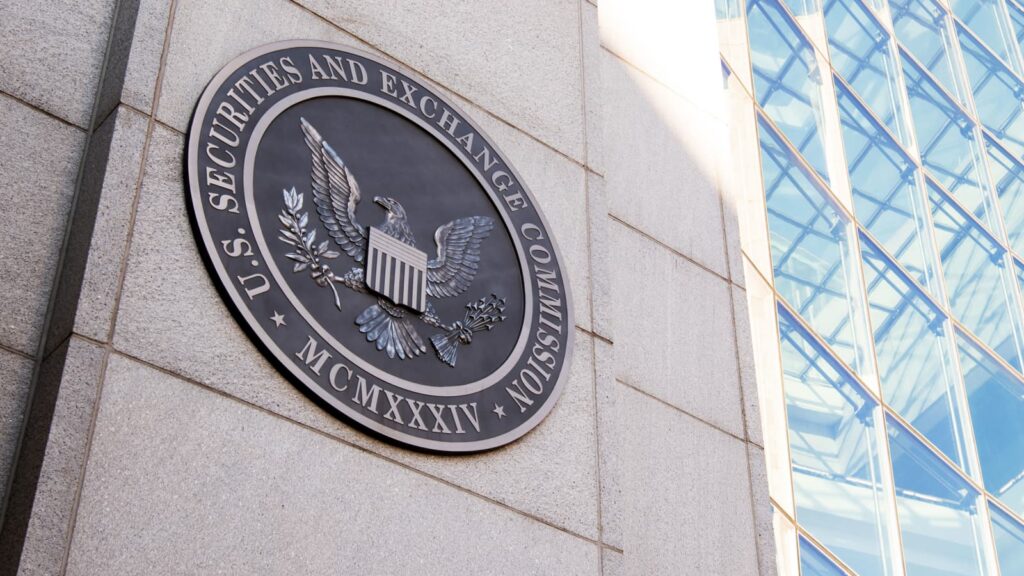In the picturesque Swiss city of Lugano, a harmonious coexistence of various digital currencies seems increasingly plausible, as local official Paolo Bortolin, the deputy chief financial officer for the city, envisions a future where Bitcoin, central bank digital currencies (CBDCs), and stablecoins can seamlessly operate in tandem.
Bortolin’s optimism stems from the belief that each of these digital assets serves distinct purposes within the evolving financial landscape.
Bitcoin, celebrated for its decentralized nature, stands as a steadfast presence that operates independently. In Bortolin’s view, this flagship cryptocurrency plays a unique role in the digital currency spectrum.
In stark contrast, CBDCs inherently embody centralization both in name and function.
Wholesale CBDCs primarily facilitate transactions among financial institutions, while retail CBDCs aspire to be the standard digital currency for everyday transactions, mirroring the Swiss franc’s traditional usage.
Though Bitcoin and CBDCs appear to coexist without direct conflict, potential friction arises when considering certain state-issued currencies.
Retail CBDCs, intended for widespread use, face uncertain prospects, largely due to concerns about privacy and their competitive impact on traditional banks.
READ MORE: SEC Files Lawsuit Exposing $1.7 Billion Cryptocurrency Fraud Scheme
Stablecoins, exemplified by Tether, also play a pivotal role in Lugano’s digital financial landscape, especially before the widespread adoption of retail CBDCs.
Bortolin posits that if individuals can seamlessly manage their Swiss francs through a central bank-controlled digital wallet and navigate decentralized finance investments via CBDCs, the necessity for conventional banking institutions could dwindle.
Bortolin anticipates stablecoins issued by private entities could vie for dominance, with a leading stablecoin emerging for each currency, similar to Tether’s current dominance with the U.S. dollar.
Switzerland is not oblivious to these developments.
The wholesale CBDC project Helvetia III has been progressing, with Bortolin acknowledging ongoing discussions regarding its implementation. If the Swiss National Bank issues a CBDC, Lugano is prepared to embrace it as part of its financial ecosystem.
In a significant move towards cryptocurrency acceptance, in December 2023, Lugano expanded its support for digital payments, including Bitcoin and USDT, for taxes and community fees.
Additionally, the city welcomes payments in LVGA, a local blockchain-based stablecoin designed for use within Lugano.
Building on the success of the “Plan B” initiative in collaboration with Tether, Lugano has attracted 400 merchants accepting BTC and USDT, along with a user base of 14,000 individuals.
These developments signal Lugano’s commitment to embracing the multifaceted future of digital currencies and establishing itself as a hub for innovation in the evolving financial landscape.
The New York City Bar Association has introduced a proposal aimed at fostering the growth of emerging technologies, particularly digital assets, within the state.
The objective is to attract cryptocurrency companies to establish their headquarters in New York and thereby safeguard the city’s prominent status as a leading commercial jurisdiction.
This initiative, known as the New York Emerging Technologies Amendments, is designed to support technological and commercial advancements that reduce transaction costs while enhancing the efficiency and security of financial transactions governed by the New York Uniform Commercial Code (UCC).
The association’s New York State Legislative Agenda, released on January 29, elaborates on this proposal.
The New York City Bar Association emphasizes the importance of these advantages, as they play a pivotal role in the decision-making process for market participants when selecting New York as their business location or jurisdiction for resolving legal disputes.
To achieve this, the proposed amendments seek to modernize New York’s UCC to accommodate recent and potential future developments in technology.
The UCC has remained unchanged since 2014, and significant technological progress has occurred since then, as outlined in the report.
READ MORE: Immutable zkEVM Brings Web 3 Game Development To QuickNode Blockchain
The report underscores the risk of New York losing digital asset market participants to other states. Currently, 11 states have already enacted model UCC amendments proposed by the Uniform Law Commission (ULC), while an additional 15 states, along with the District of Columbia, have introduced bills based on these amendments. More states are expected to follow suit.
The report raises concern that market participants may prefer these alternative states or even countries like England, which are swiftly adapting their commercial laws to accommodate emerging technologies and electronic transactions.
Although New York boasts the highest number of cryptocurrency companies globally, with 843 firms at the end of 2023, it ranked third on Recap’s 2023 list of top crypto hub cities.
To prevent cryptocurrency firms from relocating to more crypto-friendly jurisdictions, the NYC Bar Association stresses the importance of embracing these new amendments, emphasizing that they will sustain New York’s leadership in commercial and financial progress while discouraging the migration of digital commerce to other, more technology-friendly regions.
It is noteworthy that New York has been identified as the worst state for crypto taxes, according to a January 22 study by CoinLedger, while Florida has been recognized as the “best state” in this regard.
On January 29th, the Central Bank of the United Arab Emirates (UAE) marked a historic milestone by conducting its inaugural cross-border digital dirham transfer through the mBridge central bank digital currency (CBDC) platform.
This momentous event saw the transmission of 50 million dirhams, equivalent to $13.6 million, to China via the cutting-edge multi-CBDC mBridge platform.
Notably, this transfer was personally initiated by Sheikh Mansour, the Chairman of the Board of the Central Bank of the UAE, who seized this occasion to commemorate the golden jubilee celebration of the central bank’s establishment.
The mBridge project, introduced in 2021, represents a pioneering collaboration among the central monetary authorities of China, Hong Kong, Thailand, and the UAE, in partnership with the Bank for International Settlements (BIS).
Remarkably, this initiative stands as the sole international collaborative endeavor involving China. The project achieved a significant milestone in September 2022 when it successfully completed its maiden pilot phase.
The mBridge platform has garnered active participation from multiple commercial banks from each member nation, collectively devoted to enhancing the platform’s infrastructure and technology. Employing a single-platform, direct-access infrastructure coupled with the HotStuff+ consensus mechanism, the mBridge ledger platform facilitates real-time, peer-to-peer transactions.
This breakthrough CBDC platform expedites the transfer of each participant country’s national digital currency.
Even beyond its borders, the mBridge project has attracted attention and scrutiny.
READ MORE: Google to Allow Cryptocurrency Ads, Boosting Bitcoin ETF Speculation
Representative Maxine Waters, a member of the House Financial Services Committee in the United States, voiced concerns regarding the potential misuse of the project to evade economic penalties.
The rise of blockchain technology and the adoption of digital currencies on distributed ledgers have spurred governments worldwide to explore the creation of national digital currencies issued by their central banks.
An illuminating report from the BIS indicates that nearly 90% of central banks across the globe are actively considering the adoption of CBDCs.
Among these, 11 countries have already launched CBDCs, while 15 are in the pilot phase, and 26 are currently in the development stage, according to data from the CBDC tracker maintained by the Atlantic Council.
In conclusion, the UAE’s central bank has achieved a momentous milestone in cross-border digital currency transfers through the mBridge platform, exemplifying the ongoing global trend toward the adoption of CBDCs.
With the burgeoning interest and investment in this transformative technology, the landscape of international finance is undergoing a profound and irreversible evolution.
Fidelity’s Bitcoin exchange-traded fund (ETF), known as FBTC, experienced a significant surge in daily inflows on January 29, attracting a total of $208 million.
This impressive figure marked a milestone as FBTC surpassed the daily outflows from Grayscale Bitcoin Trust (GBTC) for the first time since its launch.
According to data from Farside Investors, GBTC recorded outflows of $192 million on the same day, marking its lowest daily outflows since its re-launch.
This marked a notable shift in investor sentiment towards these two prominent Bitcoin investment vehicles.
The decline in GBTC outflows has been closely watched by crypto traders, who are eager to assess whether investors are cashing out of positions that had been in the red.
On January 25, JPMorgan analysts observed that GBTC outflows had previously exerted downward pressure on Bitcoin’s price but anticipated that this trend was likely to diminish in the near future.
On the same day, January 29, data revealed that nine newly launched U.S. spot Bitcoin ETFs collectively accumulated an impressive $994.1 million in trading volume.
This nearly doubled the trading volume of GBTC, which reached $570 million. Among these ETFs, BlackRock’s iShares Bitcoin Trust (IBIT) and Fidelity’s FBTC emerged as significant players, with daily volumes of $460.9 million and $315.4 million, respectively.
Together, they accounted for 78% of the total trading volume generated by the nine newly introduced ETFs.
READ MORE: SFC Issues Warning on Floki and TokenFi Staking Programs in Hong Kong
The competitive landscape in the spot Bitcoin ETF market has prompted issuers to reduce fees in order to attract investors both in the United States and globally.
Invesco and Galaxy Asset Management recently announced a fee reduction for their joint ETF, Invesco Galaxy Bitcoin ETF (BTCO), lowering the eventual expense ratio from 0.39% to 0.25%.
Notably, BTCO will have zero fees for the initial six months or until its assets reach $5 billion, at which point the reduced fee structure will take effect.
This fee war in the U.S. may have also influenced the European ETF market, where traders have reportedly been shifting their investments to American products.
Several European-based ETF providers, including Invesco and WisdomTree, have reduced their fees in response to this competitive environment.
CoinShares followed suit, further slashing fees on its flagship Bitcoin ETF, making the market more appealing to cost-conscious investors.
Overall, the surging interest in spot Bitcoin ETFs and the accompanying fee reductions demonstrate the dynamic nature of the cryptocurrency investment landscape, with investors seeking cost-effective and accessible avenues to gain exposure to Bitcoin.
In a bid to curtail short-selling activities amidst recent stock market turmoil, the Chinese securities regulator, the China Securities Regulatory Commission (CSRC), has announced new measures set to come into effect from January 29.
According to reports, the CSRC disclosed its decision on WeChat, stating that it would suspend the lending of restricted shares.
Restricted shares are typically subject to specific sale and transfer restrictions, often imposed due to corporate governance policies or as part of employee compensation plans, thereby limiting their sale.
However, they can be lent for trading purposes, including short-selling.
The CSRC has cited several reasons for implementing these rules, with a focus on promoting fairness and reasonableness in the market.
They aim to reduce the efficiency of securities lending, limit the advantages of institutions utilizing information and tools, and provide all types of investors with more time to digest market information, ultimately striving for a fairer market order.
This move follows a broader trend of China’s efforts to control capital outflows. Earlier in January, the country’s largest brokerage ceased lending stocks to retail investors and increased margin requirements for institutional investors, responding to regulatory guidance.
READ MORE: Coinbase Faces Stock Price Volatility Amid Ongoing SEC Lawsuit and Bitcoin’s Price Decline
Notably, back in October, the local regulatory body had already introduced new regulations for hedge funds, restricted shares lending by strategic investors, and intensified supervision of arbitrage activities.
Short-selling, a financial strategy where investors borrow shares and sell them in anticipation of a stock’s price decline, is at the center of this regulatory action.
China’s stock market has grappled with considerable challenges over the past year, with the CSI 300 Index benchmark declining by 11% in 2023, and the MSCI China Index falling by almost 10% during the same year, following declines of 23.6% in 2022 and 22.8% in 2021.
Furthermore, foreign investors have exhibited diminished confidence in the Chinese market, with over 170 billion yuan (US$23.4 billion) in onshore stocks sold by non-Chinese investors between July and November of the previous year, as reported by the South China Morning Post.
Despite these market challenges, China continues to invest heavily in pilot projects for its central bank digital currency (CBDC), the digital yuan.
This includes integrating the technology with foreign banks and using the digital yuan to settle commodities transactions on Shanghai exchanges, showcasing the nation’s commitment to technological advancement in the financial sector.
A $1.7 billion cryptocurrency fraud scheme involving false promises of listing on the Hong Kong stock exchange and fabricated personas has been exposed in a lawsuit filed by the U.S. Securities and Exchange Commission (SEC) on January 29.
The lawsuit names Xue Lee, also known as Sam Lee, and Brenda Chunga, who went by the moniker “Bitcoin Beautee,” as the alleged perpetrators behind the fraudulent operation.
They operated under various aliases, including HyperFund, HyperVerse, and HyperTech.
The SEC accuses Lee and Chunga of enticing investors with deceptive membership packages that guaranteed high returns from cryptocurrency mining activities.
The ill-gotten gains from these investments were allegedly used to acquire luxury cars, condos, and fund cryptocurrency wallets.
While Chunga has agreed to settle charges and pay civil penalties, she, along with Lee, faces charges from the U.S. Attorney’s Office for conspiracy to commit securities fraud and wire fraud.
Chunga has also pleaded guilty to these criminal charges, and a third individual, promoter Rodney Burton, has also been charged by prosecutors.
According to the SEC, Lee misled recruiters by claiming that HyperTech would be listed on the Hong Kong Stock Exchange by 2022.
The regulator also asserted that the duo shared fake screenshots of appearances on CNN and a fictitious Amazon Prime documentary, “Next: Blockchain,” to bolster their company’s reputation.
The fraudulent marketing efforts even included hiring a Thai actor to impersonate the CEO of HyperVerse, further exposing the extent of their deceit.
READ MORE: Immutable zkEVM Brings Web 3 Game Development To QuickNode Blockchain
The SEC alleges that Lee employed a pyramid scheme-like referral system to recruit new investors, enticing them with the promise of initial coin offerings at 20-30% below market value.
Chunga is accused of personally pocketing $3.7 million, which she used to buy a $1.2 million house in Maryland, a $1.1 million condo in Dubai, a BMW, and designer clothing.
Meanwhile, Lee allegedly transferred around $140,000 in cryptocurrencies to a wallet under his control.
This fraudulent operation, active from June 2020 to May 2022, highlights the persistence of fraud and noncompliance with U.S. securities laws in the cryptocurrency industry.
Gurbir Grewal, the director of the SEC’s Division of Enforcement, emphasized the scheme’s impact, stating, “As alleged in our complaint, Lee and Chunga attracted investors with the allure of profits from crypto asset mining, but the only thing that HyperFund mined was its investors’ pockets.”
The SEC is seeking permanent injunctive relief, conduct-based injunctions preventing the defendants from participating in multilevel marketing or cryptocurrency offerings, disgorgement of ill-gotten gains, prejudgment interest, and civil penalties.
Chunga resides in Maryland, while Lee, an Australian national, is believed to be currently residing in the United Arab Emirates.
Lee is also facing scrutiny from the Australian securities regulator due to the collapse of his previous cryptocurrency venture, Blockchain Global, in 2021, leaving creditors owed $58 million.
The Australian Securities Investment Commission is considering potential charges against Lee and his business partners, Allan Guo and Ryan Xu, for potential breaches of the Corporations Act.
Trading volumes on the Solana-based decentralized exchange, Jupiter, have surged to an impressive $480 million in the past 24 hours.
This surge in activity can be attributed to the high demand for a new memecoin airdrop and increased stablecoin swaps.
Jupiter’s trading activity has surpassed that of Uniswap, a popular decentralized exchange on the Ethereum network, by $10 million.
The combined trading volume of both Uniswap’s v2 and v3 protocols in the last 24 hours amounted to only $470 million, according to CoinGecko data.
Of the $480 million in daily trading volume, approximately $50 million was generated from the trading of Wen, a new memecoin.
Wen could be claimed by any Solana user who had interacted with Jupiter within the last six months, as well as by owners of Solana’s Saga phone.
Jupiter’s developers introduced Wen as an experimental precursor to the highly anticipated airdrop of the exchange’s native token, JUP, scheduled for launch on January 31.
READ MORE: U.S. Lawmakers Push for Deepfake Image Criminalization in Wake of Taylor Swift Scandal
The majority of the trading volume on Jupiter over the past day was attributed to the exchange of Solana for USD Coin and Tether, amounting to $191 million of the total daily volume.
As of the current moment, pre-market JUP tokens are trading at approximately $0.61, based on data from perpetuals traded on the decentralized exchange Aevo.
The estimated total value of the upcoming 1 billion token JUP airdrop could exceed $600 million at current prices.
This surge in market activity surrounding Wen and JUP coincides with a wave of recently announced airdrops within the crypto ecosystem.
On January 25, AltLayer, an Ethereum scaling solution, unveiled plans for a $100 million airdrop to its users.
Additionally, Dymension, a multilayer rollup deployer, is preparing to launch its mainnet in the coming days, offering a total of 70 million DYM tokens as an airdrop to eligible users, valued at approximately $210 million at pre-market prices.
Robert F. Kennedy Jr., the trailblazing presidential candidate, has made headlines by becoming the first to accept Bitcoin for campaign donations. Kennedy has now aligned himself with his rival,
Donald Trump, in a shared commitment to combat the development of a central bank digital currency (CBDC) within the United States.
Taking to social media on January 24, Kennedy released a snippet of his interview on X, where he engaged in a discussion about the potential dangers posed by a CBDC.
This conversation featured Joseph Mercola, a well-known advocate for alternative medicine, who has advocated for unconventional treatments for COVID-19. Mercola hosts a popular podcast named “Take Control Over Your Health.”
In a brief one-minute video, Kennedy raised alarm bells about the implications of a CBDC, suggesting that it could enable the government to monitor every single financial transaction made by citizens.
He argued that this surveillance capability could lead to potential blackmail or undue pressure on individuals, emphasizing, “It [a CBDC] is a calamity for human rights and for civil rights.”
Drawing parallels with China, where the “digital yuan” is already in circulation, Kennedy pointed out that it is intertwined with an extensive social credit system.
READ MORE: US Regulators Issue Cautionary Crypto Warning: Beware of Overhyped AI Trading Bots
According to U.S. politicians, this system allows the government to restrict access to an individual’s funds based on surveillance camera detection of non-compliance.
Kennedy pledged to halt any progress towards implementing a CBDC if he were to assume the presidency, vowing to preserve the use of paper cash. He also highlighted that Bitcoin provides better protection for individuals compared to cash.
Notably, another presidential contender, Donald Trump, has unequivocally promised on two occasions that he would never permit a CBDC in the United States.
Despite making critical comments about Bitcoin during his tenure as president, Trump’s former Republican Party rivals, Vivek Ramaswamy and Florida Governor Ron DeSantis, have adopted pro-crypto and anti-CBDC stances in their own presidential campaigns, ultimately endorsing Trump after exiting the race.
Kennedy, who departed from the Democratic Party in October 2023, continues to work towards securing inclusion on state ballots.
Notably, party ballot access demands fewer voter signatures than running as an independent candidate.
As of January 2024, he has indicated his openness to potentially running as a Libertarian Party candidate, further solidifying his stance against the introduction of a CBDC in the United States.
Blockchain security company PeckShield has released data summarizing losses from hacks and scams in 2023, revealing a total loss of $2.61 billion, excluding multichain incidents.
This figure represents a 27.78% decrease compared to the previous year when global cyber thefts amounted to approximately $3.6 billion.
PeckShield’s report, published on January 29, 2024, also highlighted that over $674 million was recovered from more than 600 large-scale hacks they monitored, accounting for 25% of the stolen cryptocurrencies.
This recovery amount marked a significant increase from 2022 when only around $133 million was recuperated from hacks.
The security firm attributed this improvement to more active negotiations with hackers and the emergence of bug bounty programs.
According to the PeckShield team, engaging in active negotiations with hackers and implementing bug bounty programs or on-chain investigations to identify vulnerabilities can enhance security and lead to the return of stolen funds.
Collaborating with centralized exchanges, Tether, and law enforcement to freeze funds whenever they are detected can also contribute to fund recovery.
READ MORE: Tesla’s Bitcoin Sales Cost Company Over $300 Million in Potential Profits
Aside from recovery statistics, PeckShield highlighted various data points, including flash loans, decentralized finance (DeFi), and the volume difference between hacks and scams. Among the hacks in 2023, 40% were flash loan attacks.
Despite improvements in DeFi security, PeckShield emphasized that DeFi remained a prime target for hacks and scams.
CertiK co-founder Ronghui Gu noted the positive developments in blockchain security, citing the growth of bounty platforms and proactive security measures as encouraging signs for the year.
However, PeckShield pointed out that 67% of the losses in 2023 occurred in the DeFi sector, while 33% were in centralized finance.
Hacks accounted for 58% of the losses, with scams contributing to the remaining 42%.
Malicious actors also diversified their crypto targets.
From 2018 to 2021, Bitcoin dominated illicit transaction trading volume, but in 2022 and 2023, stablecoins began to take a larger share of the illicit transaction volume, signaling a shift in the crypto landscape.
On January 27, Bitcoin remained steady at approximately $42,000, instilling confidence in traders due to recent price gains towards the end of the week.
Market data from Cointelegraph Markets Pro and TradingView revealed the usual calm weekend price movements, with $41,800 as a focal point.
The preceding day had witnessed a 5% increase in Bitcoin’s value, marking an improvement in market conditions compared to previous weeks, as reported by Cointelegraph.
Several recurring factors continued to capture the attention of investors, including the outflows from exchange-traded funds (ETFs), selling pressure stemming from defunct exchanges like FTX and Mt. Gox, and the impending block subsidy halving.
In a recent YouTube update, Michaël van de Poppe, the founder and CEO of MN Trading, expressed his belief that the current correction in Bitcoin’s price had come to an end.
He anticipated that, leading up to the halving in April, Bitcoin would experience a climb to its long-term range highs, with the possibility of encountering liquidity in the mid to low-$30,000 range before this ascent. He speculated that there might be one more rally to reach $48,000 before a final correction.
READ MORE: Crypto Analyst Urges SEC to Rethink Licensing Requirements for Local Exchanges
Van de Poppe also posited that over time, the negative impacts of FTX, Mt. Gox, and GBTC maneuvers would diminish in significance.
He suggested that Bitcoin was likely to consolidate in the range of $37,000 to $48,000 in the coming months, during which Altcoins might gain momentum.
Furthermore, he projected that the ETF’s real impact on Bitcoin’s price would materialize in the next few years, potentially driving it to a range of $300,000 to $500,000.
However, not everyone shared the same optimism, as some analysts believed that Bitcoin could still face a potential return to $30,000 or even lower in the months ahead.
For shorter timeframes, Rekt Capital, a well-known trader and analyst, emphasized the significance of the upcoming weekly close.
He noted that Bitcoin had displayed a favorable response during the week, gradually positioning itself to reclaim the lost range.
He suggested that a weekly close above the critical level of approximately $41,300 could potentially salvage the range.












